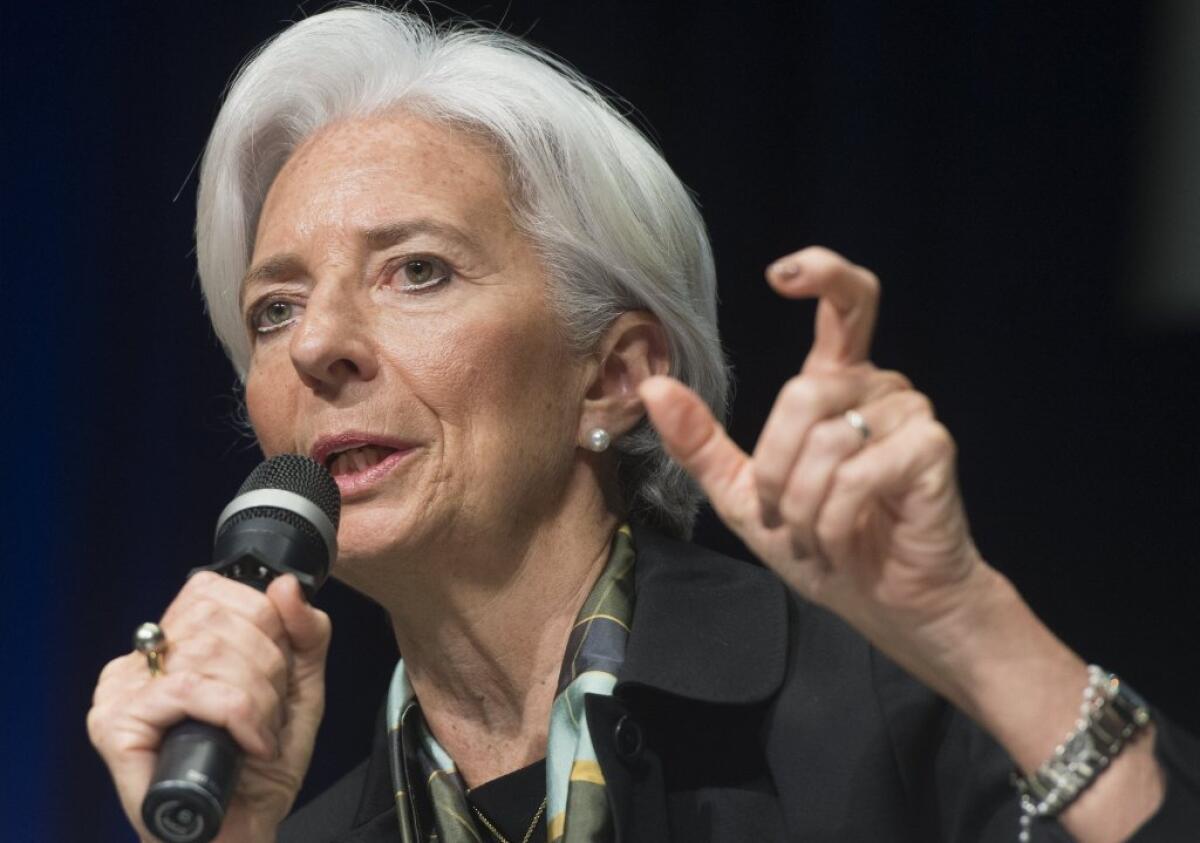IMF sees modest, uneven growth in global economy

Global economic growth is likely to remain modest and highly uneven, and the longer-term prospects are even more sobering, according to the International Monetary Fund.
The IMF, in its latest outlook released Tuesday ahead of its spring meeting in Washington later this week, sees the U.S. economy expanding at a robust 3.1% this year, up from 2.4% last year.
That’s less optimistic than the IMF’s forecast in January, which predicted U.S. growth at 3.6% this year; the downgrade reflects the weak first quarter and strong dollar that is weighing on American exports.
The U.S. is still expected to be the main locomotive for the world economy, which is projected to grow 3.5% this year, up just a notch from 3.4% in each of the last two years. By global standards, these are moderate rates and well below pre-recession levels.
During the 2008 financial crisis and in its immediate aftermath, it was the sluggish performance of advanced economies like the U.S. that weighed on the world, while developing countries led by China pushed ahead. The tables have since turned.
Economic output in rich countries is expected to accelerate to 2.4% this year and next, up from 1.8% this year. By comparison, the IMF said growth in the developing world will weaken to 4.3% this year from 4.6% last year and 5% in 2013.
One big factor in the divergent trends is energy and other commodities. The steep fall in prices of oil and metals such as copper is generally a plus for the U.S. and Europe, but are taking a toll on big exporting nations such as Russia, Brazil and Nigeria.
Meanwhile, growth in China, the world’s largest developing nation, is likely to keep sliding as authorities move to tamp down excessive investments in real estate. The IMF reckons China will expand 6.8% this year, down from 7.4% last year, and then slide further to 6.3% next year.
The IMF’s projections for the U.S. are more bullish than other forecasts, including that of the Federal Reserve. Besides the strong dollar, risks to the American economy include geopolitical instability and the uncertainty of monetary policy as the Fed prepares to hike interest rates for the first time in nearly a decade.
Longer term, the IMF’s latest World Economic Outlook paints a picture of lowered expectations.
The lender of last resort warned that the world’s potential growth, or the maximum speed of economic activity before inflation heats up, will be lower than in the past. That’s partly because of the lingering effects from the financial crisis, but has more to do with longer-term trends such as slowing productivity and population growth.
“More subdued growth prospects lead, in turn, to lower spending and lower growth today,” Olivier Blanchard, the IMF’s chief economist, said Tuesday.
The IMF’s managing director, Christine Lagarde, said this “new mediocre” threat could be the “new reality” for the global economy, unless nations act with structural reforms and policies that boost infrastructure spending.
But, Lagarde said in a speech last week, “frankly, in too many countries, these reforms have been lagging.”
Follow me on Twitter at @dleelatimes







